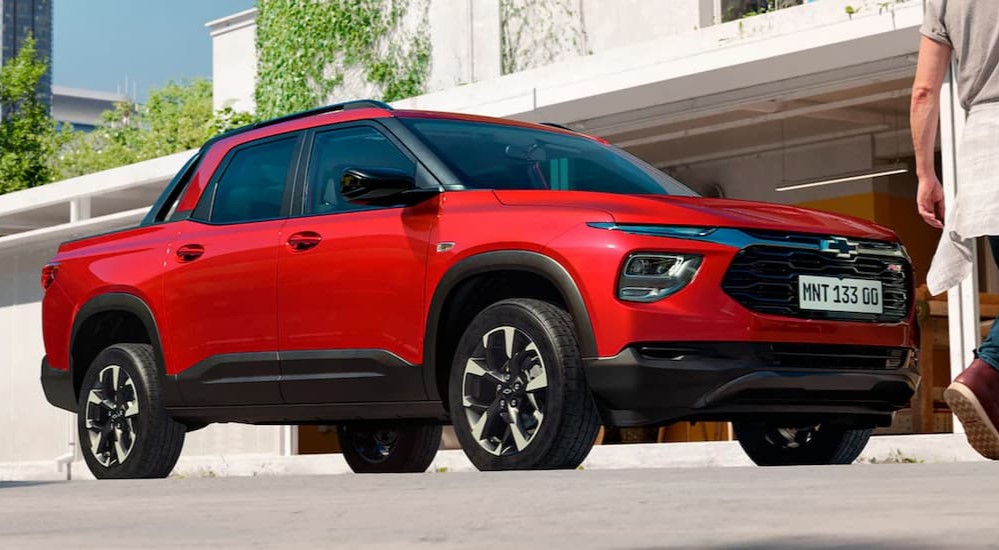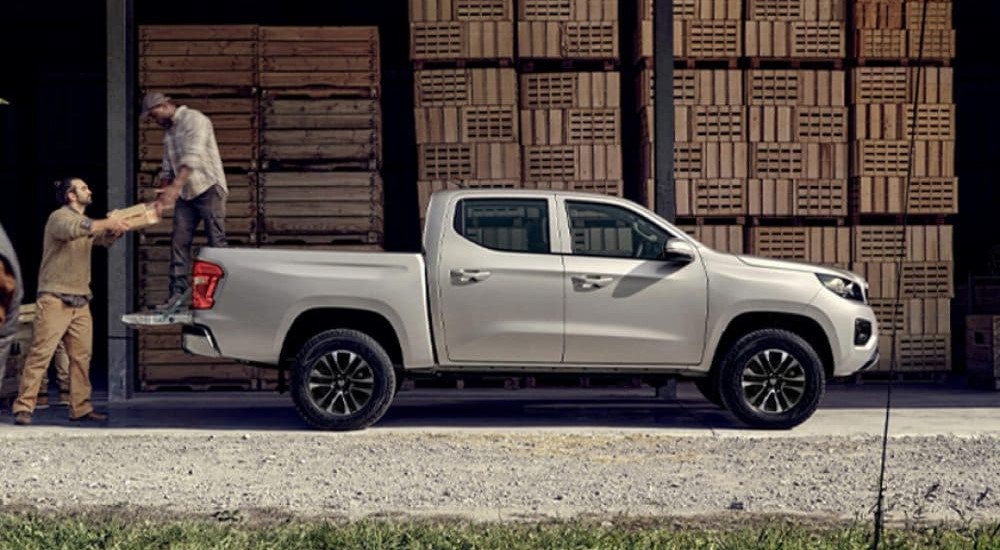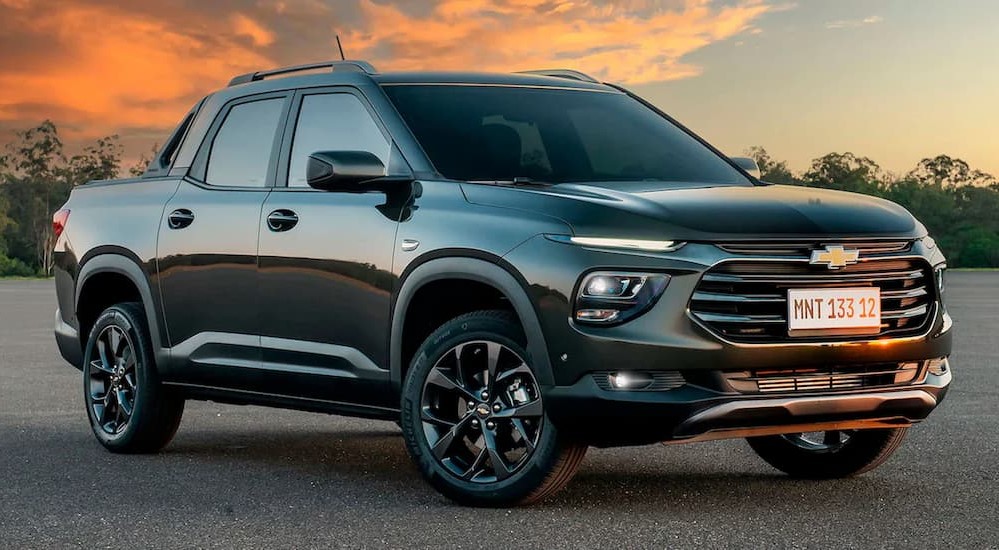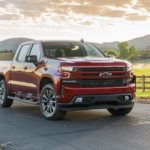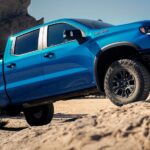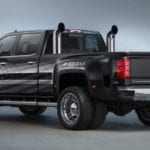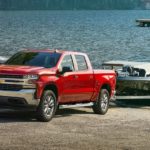For decades, Ford has dominated the US small truck market—first with the Ranger and now with the Maverick. Since its introduction, sales of the Maverick have exploded. In the first seven months of 2024, more than 100,000 Mavericks left US dealerships—more than as many sold in the whole of 2023. Seeing this, along with solid sales of the Hyundai Santa Cruz, many automakers are seeking to get in on the action, with Toyota, Subaru, Kia, Nissan, Alpha Motors, and others confirmed or rumored to have compact trucks in development for US buyers.
Two of the world’s biggest pickup truck brands, though, continue to sit on the small truck sideline—at least in North America. Chevrolet has seen success in Brazil with the compact Chevy Montana for the original 2003-2021 run and the 2023 rebirth. Meanwhile, earlier this year, Stellantis relaunched the midsize Peugeot Landtrek as the Ram 1200 in the Mexican market. However, neither compact truck is currently sold in the US, and as I write this, there are no indications these trucks will be anytime soon.
I previously discussed whether it’s time to bring the Chevy Montana to the North American market. With the introduction of the Ram 1200 nameplate, though, it’s a topic worth revisiting from a different angle. Instead of asking whether the US is ready for these vehicles, I’m asking a different question: Why haven’t Ram and Chevy brought them to the US yet? Answering this requires looking at the market and demand for trucks—both compact and full-size—as well as considering what Stellantis and GM are focusing on going forward.
The US Compact Truck Market Is Still Very Small
It’s no secret that, above all else, introducing a new vehicle to a market is all about dollars and cents. If an automaker thinks they’ll make enough money by selling a car, truck, or SUV somewhere, they will. With that in mind, I want to dive deeper into the current state of the small truck market and its outlook.
In my original article about the Chevy Montana, I noted a Global Market Insights (GMI) report projecting the worldwide small truck market to grow an average of more than 5% per year through 2032, and more than 55% of the market is North America-based. This information still holds today. However, the volume needs to be considered, too. The report gives the total small truck market size as $29 billion in 2023 and a projected $43.7 billion by 2032.
In a vacuum, $29 billion sounds like a lot of money—and in many contexts, it is. But then you stack it against other vehicle segments. For example, GMI puts the global crossover SUV market at $565.5 billion for 2023; that’s 1,850% more than compact trucks! This segment is also expected to grow at around the same rate, which will have it soaring past $930 billion in 2032. If you want a more apples-to-apples comparison, the current compact crossover market share comes out to $220.5 billion, which is still 660% more than small trucks.
Looking US-specific, the best data I could find was from Cox Automotive and Kelley Blue Book, which examined vehicle segments over the past six years. For this article, what’s most telling is what wasn’t listed. They only published data for the top eight segments, and compact and midsize trucks were among them. Compact SUVs (~18%), midsize SUVs (~16%), and full-size pickups (~13%) remain the bread and butter, followed by various SUVs and cars. This is all a long way of saying that small trucks remain a small percentage of US vehicle sales—and with other players soon entering the fray, Stellantis and GM may not think it’s worth their while.
The Collective US Pickup Truck Market Is Shrinking
Next, we need to talk about trucks en masse. While the small truck market is growing a little, the overall US pickup truck market can be described as stagnant at best and concerning at worst. The Cox Automotive data found that full-size pickup sales have fallen steadily in the US, going from 16% of all vehicles in 2020 to 13% in 2024. While individual truck models from the Ford F-Series, Chevy Silverado, and Ram Pickup continue to do well, people are collectively gravitating away from trucks in favor of vehicles like subcompact SUVs and compact cars.
As for the future, Statista projects US pickup truck revenue to fall 1.2% every year through 2028. Meanwhile, there is disagreement about the worldwide direction of pickup trucks. Statista believes the global pickup market will shrink by 0.78% annually through 2028, but Fortune Business Insights forecasts 5.4% growth annually through 2032. Even with this disparity, though, we can at least take away that pickup trucks have a better prognosis in other countries than stateside. Pickup truck sales in China by April 2024 were up 4.4% year over year, and Ram pickup sales in Europe increased 20% from 2022 to 2023.
Admittedly, a small truck is a much different vehicle than a full-size pickup. Rather than being a work and tow vehicle, it’s more of a lifestyle automobile, so the same rules and influences may not apply. Given what’s known, though, it’s more understandable why the Ram 1200 and Chevy Montana would be introduced in non-US markets; recent trends indicate this approach could have more potential.
Stellantis and GM Have Other Priorities
So far, I’ve only discussed trucks as they relate to the initial question. But it’s no surprise that Stellantis and GM—the auto giants behind the Ram 1200 and Chevy Montana, respectively—have a lot on their plates. Here are just some of the announcements in the last two years from these automakers:
- Stellantis and Samsung are spending more than $3.2 billion to construct a new EV battery plant in Indiana.
- GM will spend more than $850 million upgrading US manufacturing plants so they can produce the sixth generation of their small block V8 truck engines.
- Stellantis plans to ramp up production at its Italian facilities with hybrids and other new models to have them at full capacity by 2030.
- Both automakers have announced or released updated versions of several key vehicles, including the Chevy Corvette ZR1 sports car, GMC Terrain crossover SUV, Dodge Charger muscle car, Chevy Tahoe full-size SUV, and Jeep Wagoneer S EV.
- Stellantis will be laying off as many as 2,450 US factory workers by the end of 2024.
Then, you factor in everything involved with bringing a vehicle to a new market. Even if the vehicle already exists elsewhere, companies need to study market trends, ensure compliance with country/state regulations, put together a manufacturing plan, come up with a marketing campaign, and much more. Considering everything at play, it’s perfectly reasonable to say that launching new US compact and midsize trucks isn’t high on Stellantis and GM’s to-do lists.
What’s Next for the Ram 1200 and Chevy Montana?
With the US pickup truck market being in an uncertain state, the small truck market being a comparatively small pond, SUVs and cars being primary sales drivers, and various big projects on the horizon, it’s tough to say when the Ram 1200 and Chevy Montana (or any other small truck from these brands) might reach US dealerships. And, of course, there could always be unforeseen factors that affect the demands of US customers and the feasibility of introducing these trucks. I’ll continue to monitor the situation and follow up if there are any new developments.
